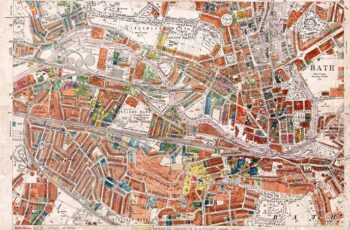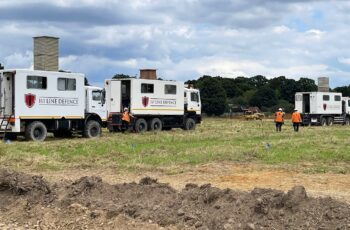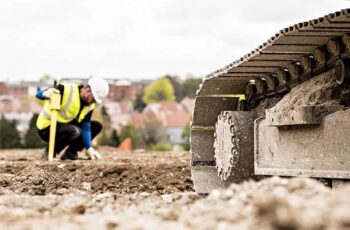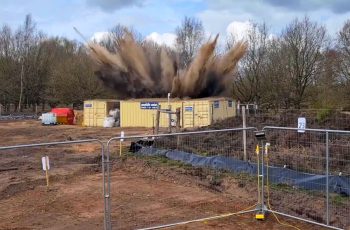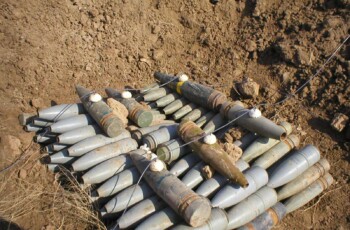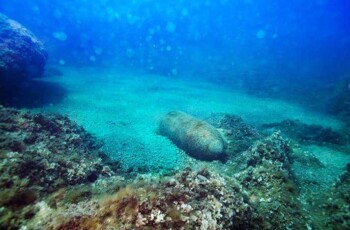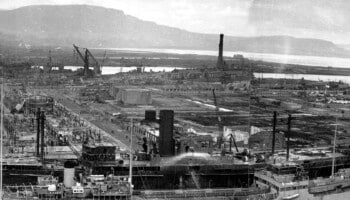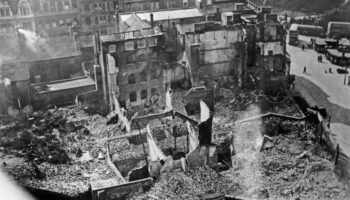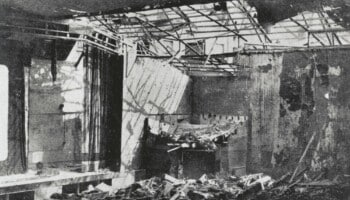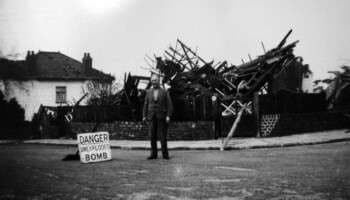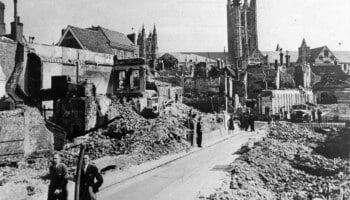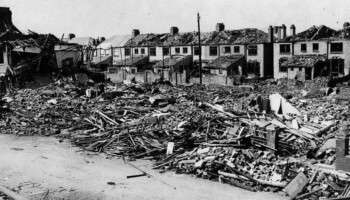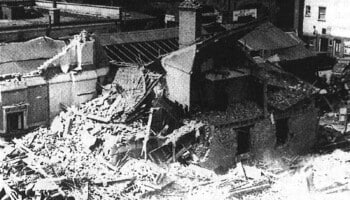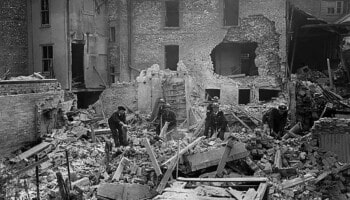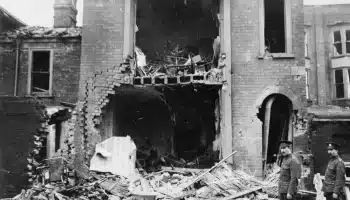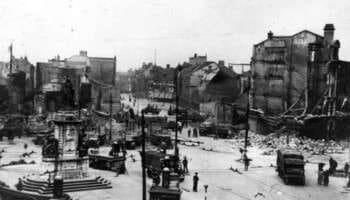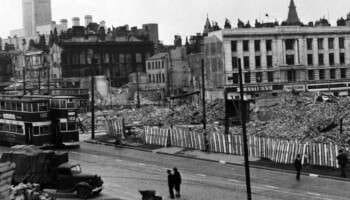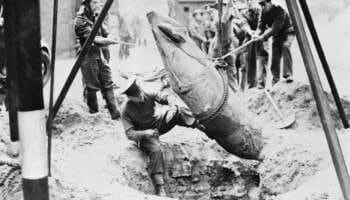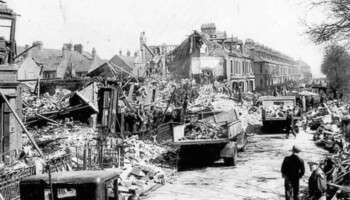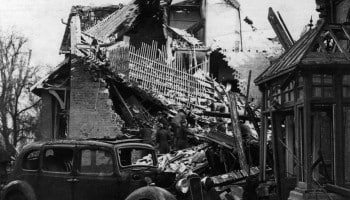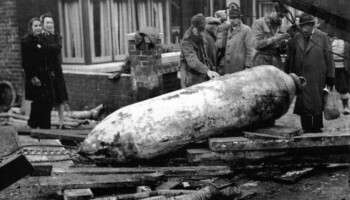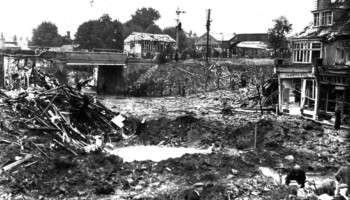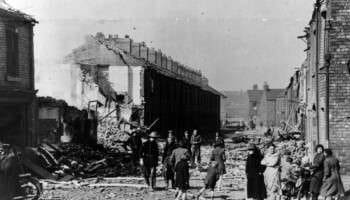Home » Resources » UXO City Guides »
UXO City Guide
Home Office Bombing Statistics for Swansea
Record of German Ordnance dropped on the County Borough of Swansea
High Explosive Bombs (All types)
1,496
Parachute Mines
4
Oil Bombs
0
Phosphorus Bombs
5
Fire Pots
12
Pilotless Aircraft (V-1)
0
Long-range Rocket Bombs (V-2)
0
Weapons Total
1,517
Area Acreage
21,600
Number of items per 1,000 acres
70.2
Why was Swansea targeted and bombed in WWII?
Swansea’s industrial and port facilities were important to the UK’s war effort which made it a target of strategic importance for the Luftwaffe. Swansea was bombed in approximately 40 raids including a particularly heavy three-night raid in February 1941.
Luftwaffe target records for Swansea include references to ammunition depots, oil refineries, dockyards and industrial factories.
Home Office Bombing Statistics for Swansea
Details obtained from the official Home Office bombing statistics, indicates the quantity and type of bombs that fell on the County Borough of Swansea during WWII (excluding incendiary bombs).
A total of 1,517 bombs fell on Swansea, equating to an average of 70.2 items of ordnance recorded per 1,000 acres.
These statistics do not account for any bombs that fell unrecorded during raids, many of which fell into areas that had already been previously bombed and were potentially obscured by ruins and rubble.
Major bombing raids on Swansea
Many of the raids on Swansea were relatively minor, but several in particular caused widespread damage and destruction. From 19th-21st February 1941, the ‘Three Nights Blitz’ saw around 800 high explosive bombs dropped on the city – killing 230 people and injuring 400 others.
Large raids occurred on several occasions:
- September 1st – 2nd 1940 (approx. 250 H.E. bombs, 1,000+ incendiary bombs)
- January 17th 1941 (approx. 100 H.E. bombs, 6-7,000 incendiary bombs)
- February 19th – 21st 1941 (approx. 800 H.E. bombs, 30,000 incendiary bombs)
In total, approximately 40 raids were inflicted on Swansea during WWII. The photo below, taken shortly after the war – shows an area of clearance in Swansea due to bomb damage. Many buildings were destroyed outright by bombing, and others were damaged so heavily that they were deemed unsafe and were later demolished.
Can UXO still pose a risk to construction projects in Swansea?
Swansea did not sustain as much bombing as the UK’s largest cities, although it was the most heavily bombed administrative area in Wales, with almost 1,500 recorded H.E. bombs. Much of the bombing targeted the docks and industrial areas, but the sheer quantity, combined with the inaccuracy of WWII-era bombing, meant that bombs fell across the city.
The primary potential risk from UXO in Swansea is from items of German air-delivered ordnance which failed to function as designed. Approximately 10% of munitions deployed during WWII failed to detonate, and whilst efforts were made during, and after the war to locate and make UXBs safe, not all items were discovered. This is evidenced by the regular, on-going discoveries of UXO during construction-related intrusive ground works not only in Swansea, but across the UK.
Occasionally items of British explosive ordnance are also encountered – often associated with WWII defensive measures or troop operations. Anti-aircraft batteries were stationed around Swansea, and as a major coastal city it was well-defended.
As with German bombs, some anti-aircraft shells failed to detonate and ended up in the ground, and other munitions intended for the defence of the city were sometimes disposed of through burial after the risk of invasion had passed.
I am about to start a project in Swansea, what should I do?
Developers and ground workers should consider this potential before intrusive works are planned, through either a Preliminary UXO Risk Assessment or Detailed UXO Risk Assessment. This is the first stage in our UXO risk mitigation strategy and should be undertaken as early in a project lifecycle as possible in accordance with CIRIA C681 guidelines.
It is important that where a viable risk is identified, it is effectively and appropriately mitigated to reduce the risk to as low as reasonably practicable (ALARP). However, it is equally important that UXO risk mitigation measures are not implemented when they are not needed.
While there is certainly potential to encounter UXO during construction projects in Swansea, it does not mean that UXO will pose a risk to all projects. Just because a site is located in Swansea does not mean there is automatically a ‘high’ risk of encountering UXO. It really does depend on the specific location of the site being developed.
A well-researched UXO Risk Assessment will take into account location specific factors – was the actual site footprint affected by bombing, what damage was sustained, what was the site used for, how much would it have been accessed, what were the ground conditions present etc.
It should also consider what has happened post-war – how much development has occurred, to what depths have excavations taken place and so on. This will allow an assessment of the likelihood that UXO could have fallen on site, gone unnoticed and potentially still remain in situ.
Recent UXO discoveries in Swansea
Since the war, many items of UXO have been discovered across multiple cities within the UK, with Swansea no exception. See the news articles below about UXO incidents and discoveries from national and local press in Swansea.
1st Line Defence keep up-to-date with relevant and noteworthy UXO-related news stories reported across the UK, and you can browse through these articles using the buttons below.
Get UXO risk mitigation services from a partner you can trust
UXO City Guides
Got a project in Swansea? Not sure if there is a UXO risk? Need advice but not sure where to start?
If you need general advice about UXO risk mitigation in Swansea, get in touch.
Contact Us
* indicates required fields
